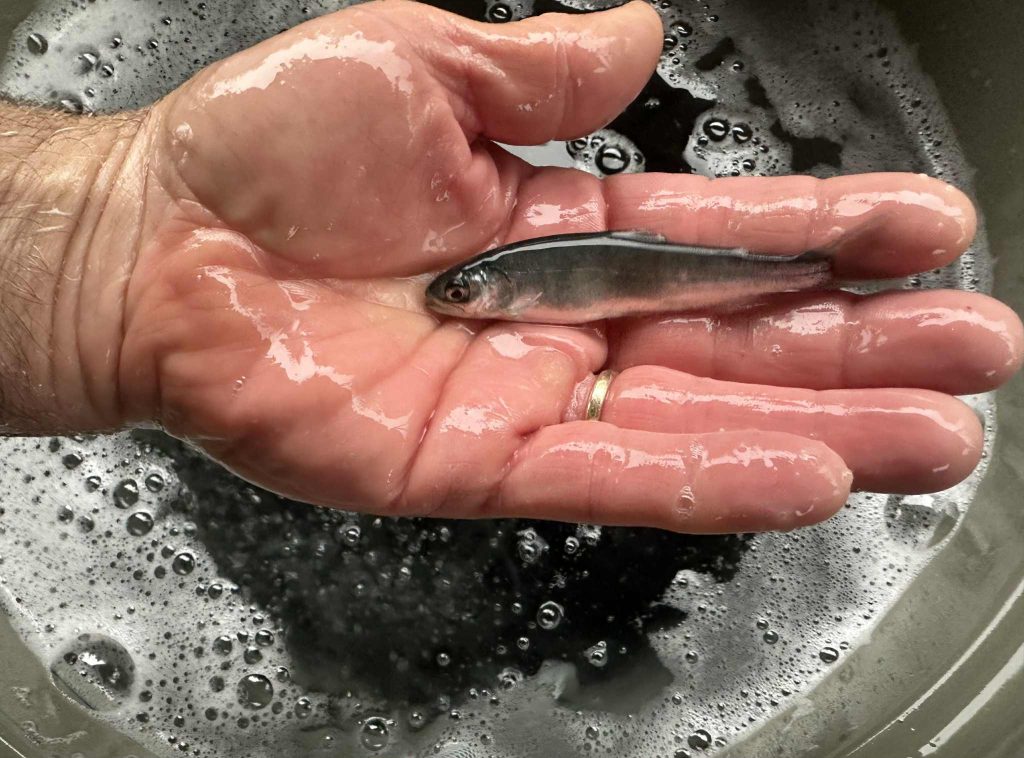
Le texte français vient bientôt.
Hello everyone,
As summer slowly transitions to fall, we hope you have had ample opportunities to enjoy Canada’s incredible biodiversity outdoors. If you’re searching for an excuse to get outside and visit some of our incredible natural heritage, the recently launched 2025 KBA Photo Contest may be just the reason you’re looking for. Photographers of all ages and skill levels are invited to help showcase the beauty and importance of Canada’s Key Biodiversity Areas. Whether its wildlife, plants, landscapes, or the people working to protect them, your photos can help tell the story of these special places. This year’s contest features four exciting categories and a special guest judge—Shane Gross, 2024 Wildlife Photographer of the Year. Winners will be featured on the KBA Canada website and social media, with a $300 grand prize up for grabs. Learn more about the contest at our website and submit your images until Oct 10th!
While you’re exploring KBAs for the Photo Contest, why not participate in the Blitz the Gap project, which is a Canada-wide effort to fill gaps in Canadian biodiversity data. The “Find new KBAs” challenge within this broad initiative has so far collected over 9400 observations of 69 high-KBA-potential but under surveyed species. These observations are helping increase our understanding of species distributions, and may help to identify entirely new KBAs. Other Blitz the Gap challenges are helping to document Canadian species that are missing from iNaturalist, filling in the gaps in Canada’s least visited areas, and directing naturalists towards unique and undersurveyed Canadian climate zones. The Blitz the Gap challenges will remain online until October 1st, so start planning your trip now!

New Ecosystem KBA work starting in BC
WCS Canada welcomes Debora Obrist to the KBA program, Debora will work with ecosystem specialists at WCS Canada and at the BC Conservation Data Center (and eventually ecosystem experts across the province) to identify and assess provincial ecosystem data and identify ecosystem-based KBAs in British Columbia.
Update on Cypress Hills KBA bioblitz
On June 6-8, Alberta Wilderness Association (AWA) and several other groups conducted a bioblitz on the Alberta side of the interprovincial Cypress Hills KBA. Cypress Hills stands as a unique ecosystem; one of the few places to remain unglaciated during the last ice age, it is an island of forest that towers over the surrounding prairies. It boasts high biodiversity and several species not found anywhere else in Canada.
Nearly 70 species experts attended the bioblitz, recording over 5000 observations and over 1000 species, including the first known record of Corallorhiza wisteriana (spring coralroot) in Alberta. AWA is working on a report to summarize the findings, to be published in the new year. For details and to see the observations visit: https://inaturalist.ca/projects/cypress-hills-bioblitz-2025.
If you’re planning a bioblitz or other event in a KBA near you and would like us to share the news or results in our next newsletter, reach out to us!

KBAs in the news
In honour of World Snake Day, WCS Canada released a video highlighting Manitoba’s Narcisse KBA, which experts believe hosts the largest annual gathering of snakes in the world!
The Summer edition of the BC Nature magazine features a great article by Ian Adams on the Rocky Mountain Tailed Frog (Ascaphus montanus), including some very cool facts about these species that meet criteria in several of western BC’s KBAs (did you know that the “tail” found on the males of this species is not a tail at all, but a copulatory organ?!). Find out more on page 20 of the BC Nature magazine, and check out the rest of the magazine to learn about BC Nature clubs’ work across the province.
Updates from the EBAR team:
Over the summer months, the NatureServe Canada EBAR team has incorporated a fresh cut of Canadian CDC data into the EBAR-KBA database. This database currently manages data for over 17000 species for many different projects, including KBA work, EBAR mapping and the Parks Canada Hudson Bay- James Bay Lowlands project work. To date, over 2200 EBAR ranges have been auto-generated for KBA and Environment and Climate Change Canada priority species, and 815 EBAR ranges have been published in total.
NatureServe Canada has been exploring opportunities to advance national species habitat modeling, and is currently coordinating a pilot project using the Model Outputs Review Tool developed by our partners in the US.
Wings of Survival: Cycling across Canada’s Prairie Grasslands
At the end of August, the Wings of Survival Team – Leanna Carriere and Timm Döbert – completed an incredible 1,300 km cycling journey from Saskatchewan to Alberta, to shine a spotlight on some of Canada’s most threatened ecosystems: prairie grasslands.
Leanna, an endurance athlete experiencing the southern mixed-grass prairie for the very first time, and Timm, a longtime prairie enthusiast and conservation scientist, set off on August 20th to complete this 10-day journey and highlight sites of geological, ecological, and cultural significance along their way. Their route took them through nine KBAs, which highlight the nationally and globally significant biodiversity that Canada’s grasslands support. These KBAs (including Big Muddy Lake, Grasslands National Park and Area, and Onefour-Lost River-Sage Creek) support large populations of species that rely on threatened grassland habitat, such as Black-tailed Prairie Dogs, Chestnut-collared Longspurs, and Upland Evening Primrose.
Huge thanks to Leanna and Timm for their dedication to raising awareness about Canada’s disappearing grasslands, and biodiversity more generally, and to everyone who supported their journey.
Timm and Leanna’s Instagram page is filled with highlights and lessons learned from their ride through the grasslands. Their next big expedition is unfolding on their website, as they prepare for a 30,000 km cycling expedition along the western flyway, mirroring bird migrations. Don’t lose sight of these inspirational athletes, follow them on social media (Instagram) or at their website: wingsofsurvival.com

KBA of the month
Sakinaw – Ruby – Garden Bay KBA
Located on BC’s Sunshine Coast in the traditional territory of the shíshálh Nation, the Sakinaw–Ruby–Garden Bay KBA is a network of lakes, streams, and forests that provide critical habitat for endangered species. Sakinaw Lake, a rare meromictic lake with two distinct layers of water that do not mix (COSEWIC 2016a; Gies et al 2014), supports a unique population of juvenile Sockeye Salmon that depend on its cool, oxygen-rich depths. The area also hosts the threatened Western Painted Turtle (Pacific Coast population), found in several lakes including Katherine Lake, known in shíshálh as p’ip’k’ilich. The surrounding forests include patches of old growth and Pender Hill, a rocky outcrop featuring Douglas-fir and arbutus typical of Garry Oak ecosystems. The endangered Oregon Branded Skipper (Hesperia colorado oregonia) also meets KBA criteria at the site.

(c) Liam Ragan

(c) Liam Ragan

The Sakinaw-Ruby-Garden Bay Bay is one of 14 known localities in Canada for Oregon Branded Skipper (c) Rand Rudland

Sakinaw Lake supports the entire spawning and rearing population of a unique population of Sockeye Salmon. Local volunteers help with hatchery support, monitoring, and habitat restoration to give this endangered salmon a chance. (c) Liam Ragan
KBA species of the month
Western Painted Turtle – Pacific Coast population (Chrysemys picta bellii pop. 1)
Meet the Western Painted Turtle — one of Canada’s most widespread freshwater turtles! Found basking in quiet freshwater ponds and wetlands from BC to Ontario, these colourful reptiles are true survivors. With bold red, orange, and yellow stripes on their limbs and unique shell markings depending on where they live, painted turtles are not just pretty—they’re tough too. Thanks to the ability to produce a natural antifreeze, they can survive freezing temperatures that would stop most other species cold. They’ve been around for 15 million years, and with that kind of adaptability, it’s no wonder they’re still around today. The Pacific Coast population of the Western Painted Turtle is isolated from all other populations in Canada by the Coast and Cascade mountain ranges. They are considered Threatened by COSEWIC, but this month’s KBA of the month feature site (below) is a stronghold for the population. Discover more about this species on iNaturalist.

Western Painted Turtle (c) Liam Ragan
The following new KBAs were added to the Registry over the past three months:
Assiniboine Corridor – Shilo (Manitoba): https://kbacanada.org/site/?SiteCode=MB129
Beaches of Pokemouche and Grand Passage (New Brunswick): https://kbacanada.org/site/?SiteCode=NB006
Bear Creek – North Sydenham River (Ontario): https://kbacanada.org/site/?SiteCode=ON209
Bernice Sandhills (Manitoba): https://kbacanada.org/site/?SiteCode=MB133
Brandon Sandhills and Douglas Marsh (Manitoba): https://kbacanada.org/site/?SiteCode=MB002
Carberry Sandhills (Manitoba): https://kbacanada.org/site/?SiteCode=MB134
Carruthers Creek (Ontario): https://kbacanada.org/site/?SiteCode=ON208
Ellice-Archie and Spy Hill (Manitoba): https://kbacanada.org/site/?SiteCode=MB103
Grassy Lake (Nova Scotia): https://kbacanada.org/site/?SiteCode=NS099
Gully Creek (Ontario): https://kbacanada.org/site/?SiteCode=ON201
Kazan Lake (Saskatchewan): https://kbacanada.org/site/?SiteCode=SK110
Kilmanagh Creek (Ontario): https://kbacanada.org/site/?SiteCode=ON202
McPhail Lake (Nova Scotia): https://kbacanada.org/site/?SiteCode=NS100
Old Crow Flats (Yukon): https://kbacanada.org/site/?SiteCode=YK001
Rice Lake Plains (Ontario): https://kbacanada.org/site/?SiteCode=ON204
Rouge River- Leslie Street Tributary (Ontario): https://kbacanada.org/site/?SiteCode=ON205
Sakinaw – Ruby – Garden Bay (British Columbia): https://kbacanada.org/site/?SiteCode=BC320
Shallow Bay, Big Slough and Swan Lake Wetland Complex (Yukon): https://kbacanada.org/site/?SiteCode=YK014
Stanley J Tributary (Ontario): https://kbacanada.org/site/?SiteCode=ON206
Tabusintac Lagoon and River Estuary (New Brunswick): https://kbacanada.org/site/?SiteCode=NB002
Tagish Narrows (Yukon): https://kbacanada.org/site/?SiteCode=YK017
Two Tree River (Ontario): https://kbacanada.org/site/?SiteCode=ON207
West Lake (British Columbia): https://kbacanada.org/site/?SiteCode=BC321
Quinns Meadow (Nova Scotia): https://kbacanada.org/site/?SiteCode=NS096
Southwestern Manitoba Mixed Grass Prairie (Manitoba): https://kbacanada.org/site/?SiteCode=MB024
Tracadie Bay and Pointe-à-Bouleau (New Brunswick): https://kbacanada.org/site/?SiteCode=NB044
English Bay, Burrard Inlet and Howe Sound (British Columbia): https://kbacanada.org/site/?SiteCode=BC020
Hamilton Harbour Waterbird Colonies (Ontario): https://kbacanada.org/site/?SiteCode=ON020
Hantzsch Island (Nunavut): https://kbacanada.org/site/?SiteCode=NU025
Algonquin (Ontario): https://kbacanada.org/site/?SiteCode=ON213
Fifteen and Sixteen Mile Creek Valleys (Ontario): https://kbacanada.org/site/?SiteCode=ON211
Lauder Sandhills (Manitoba): https://kbacanada.org/site/?SiteCode=MB135
Réservoir Beaudet (Quebec): https://kbacanada.org/site/?SiteCode=QC110
Stockton Sandhills (Manitoba): https://kbacanada.org/site/?SiteCode=MB126
Treesbank Sandhills (Manitoba): https://kbacanada.org/site/?SiteCode=MB127
Pelee Island Archipelago (Ontario): https://kbacanada.org/site/?SiteCode=ON014
Twin Lakes – Square Lake (Nova Scotia): https://kbacanada.org/site/?SiteCode=NS102
New versions of the following sites were published on the Registry:
Tombstone Territorial Park (Yukon): https://kbacanada.org/site/?SiteCode=YK049